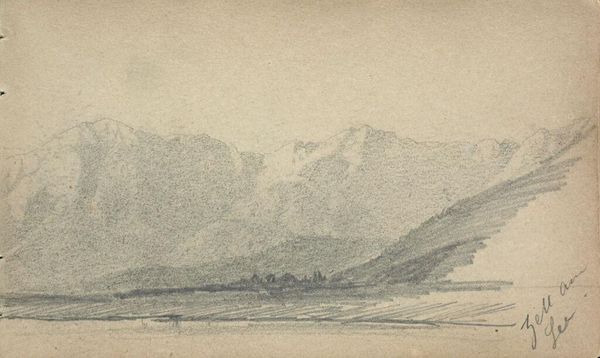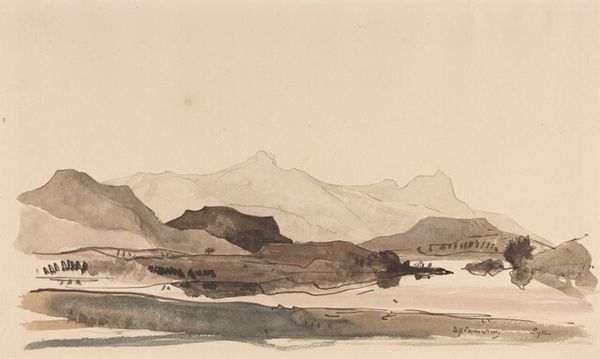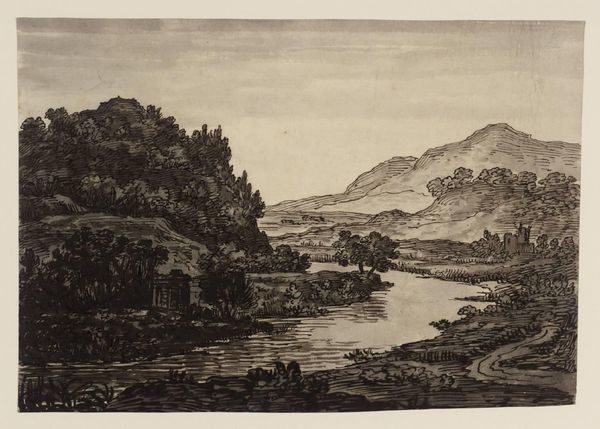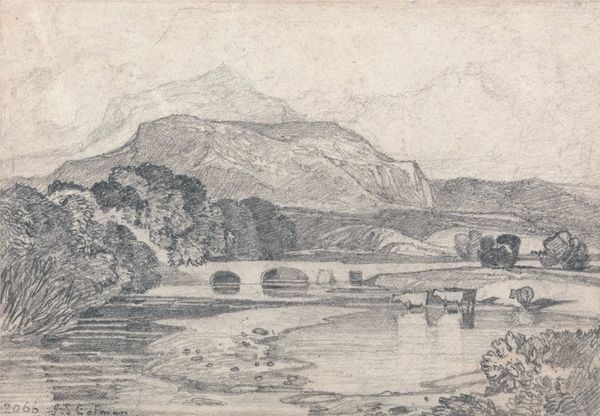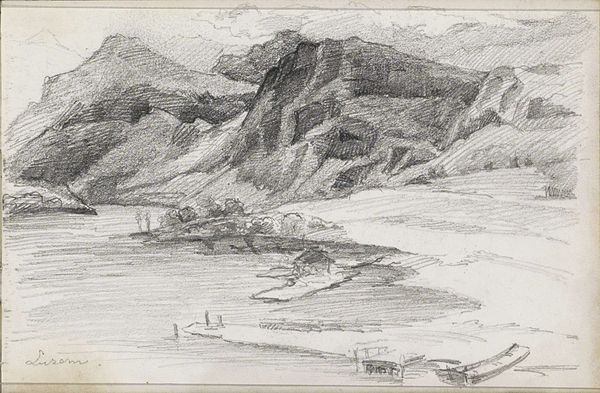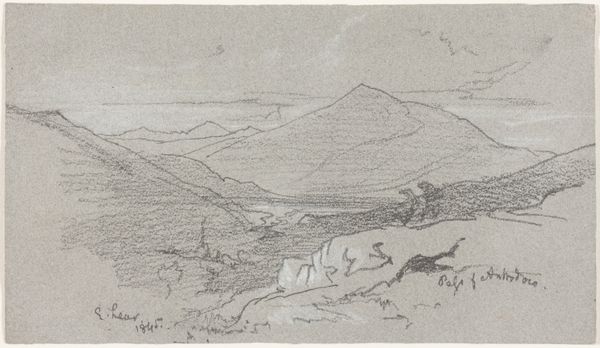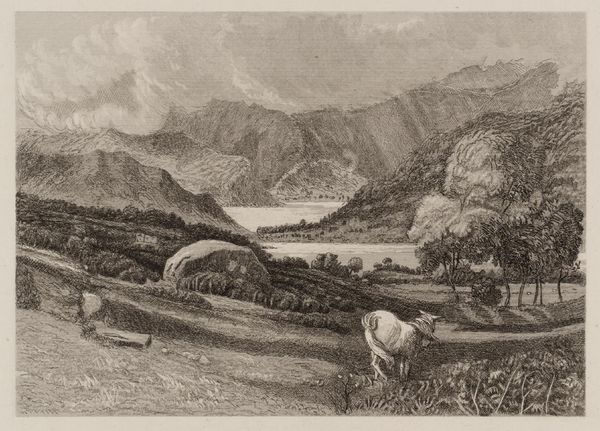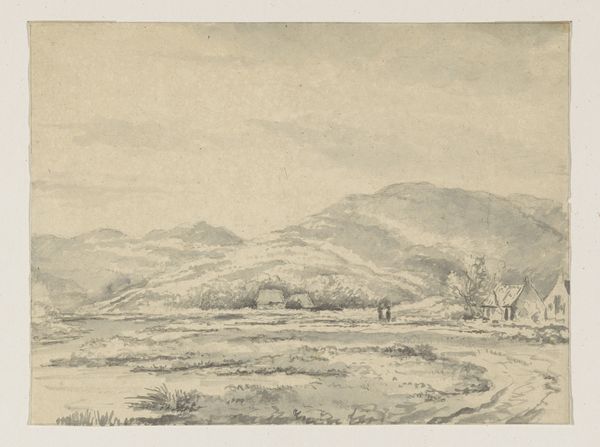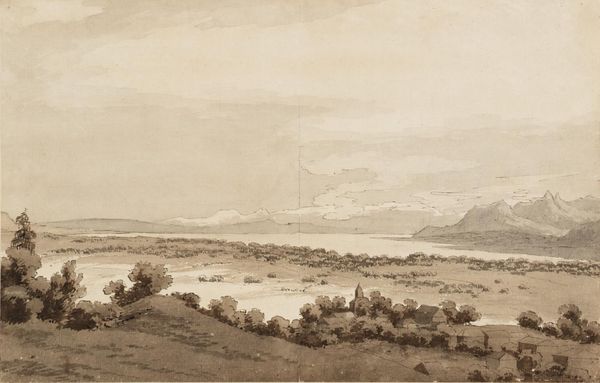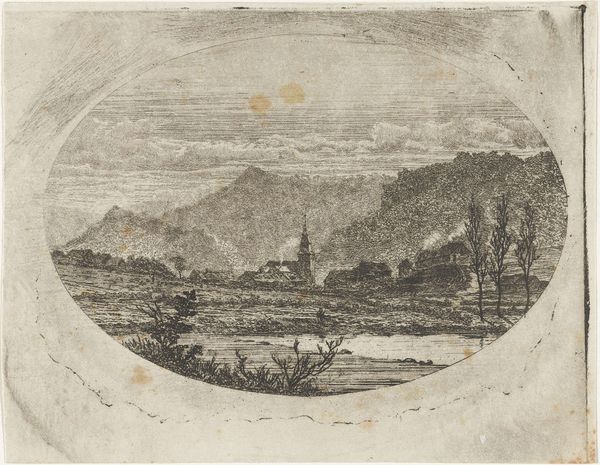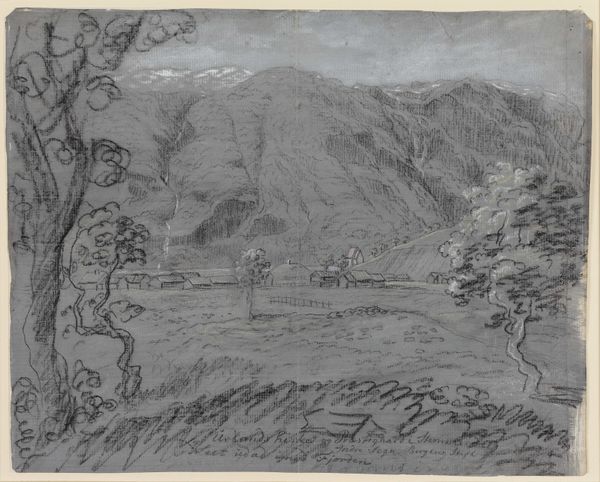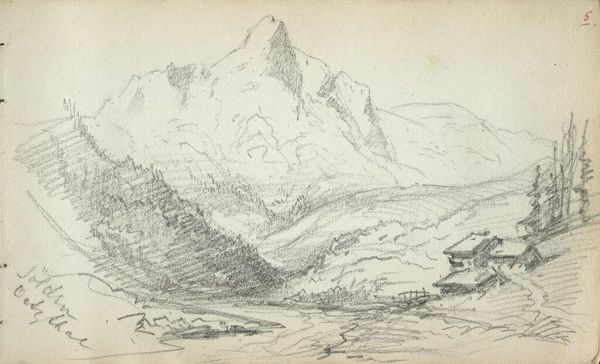
drawing, print, charcoal
#
pencil drawn
#
drawing
# print
#
landscape
#
charcoal drawing
#
pencil drawing
#
geometric
#
charcoal
Copyright: National Gallery of Art: CC0 1.0
James N. Rosenberg made this lithograph of a lake and mountain scene in 1919, and you can see how he built up the image gradually, almost feeling his way through the landscape. The graphite is velvety and smudged, with a real sense of the material in his hands. I love the way the mountains rise up in layers, one behind the other, created with these broad strokes of gray. It’s so physical, you can imagine him pressing hard into the paper, then lightening his touch for the softer areas of the sky and water. Look closely at the reflections in the lake, those almost-vertical strokes create a shimmering effect, so different from the horizontal marks used for the mountains themselves. There’s a real sense of atmosphere and depth, even with such a limited palette. Rosenberg’s process reminds me of some of Milton Avery's landscapes, though Avery uses color to create a similar feeling of space and light. In both artists' work, there's a sense of quiet observation, a real appreciation for the beauty and complexity of the natural world, open to interpretation.
Comments
No comments
Be the first to comment and join the conversation on the ultimate creative platform.
